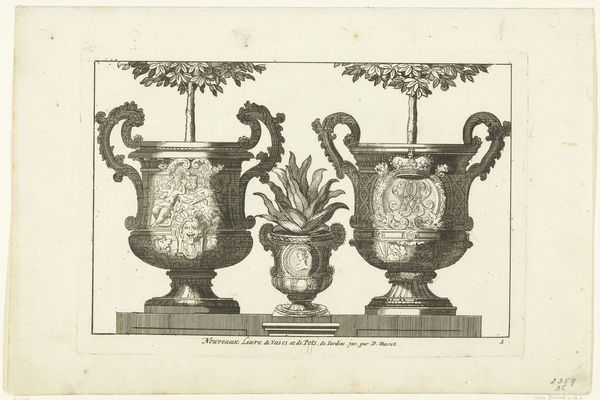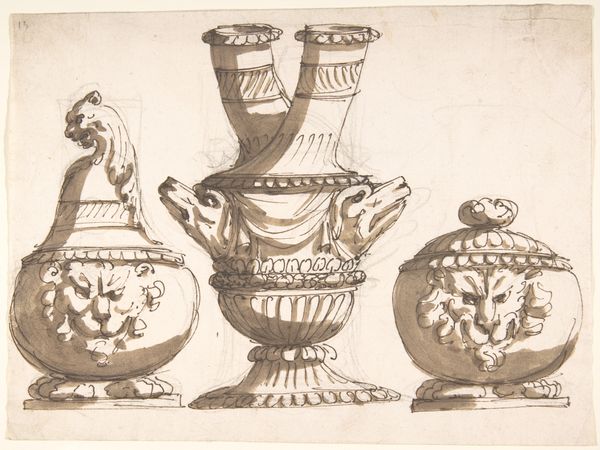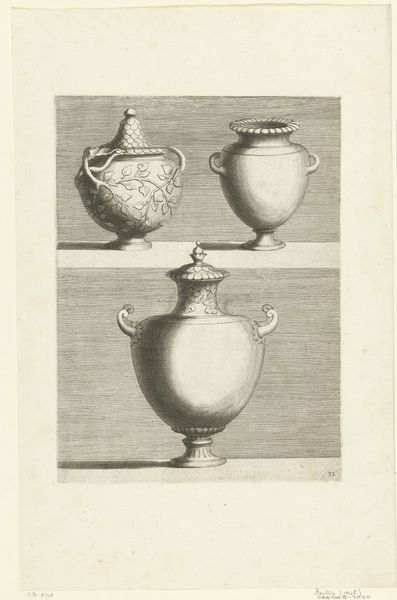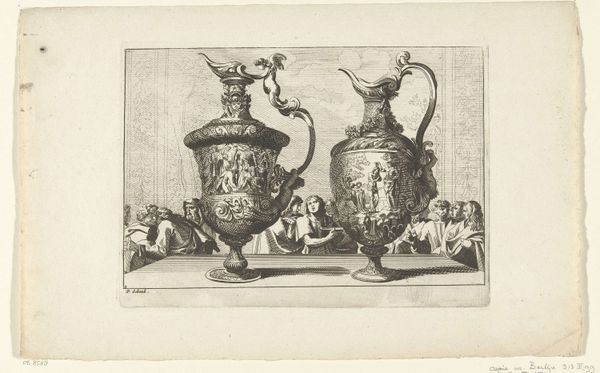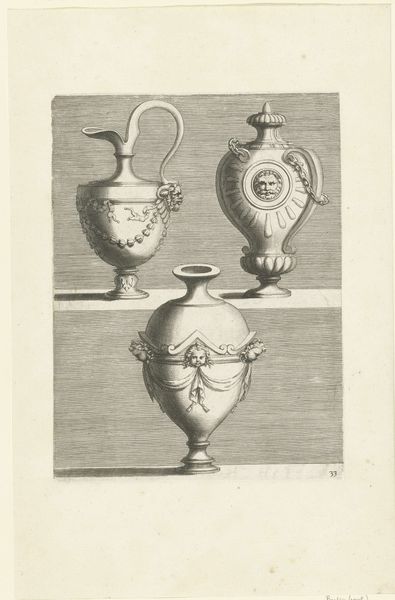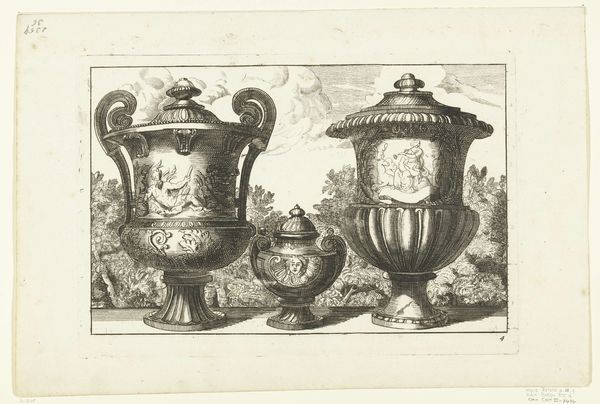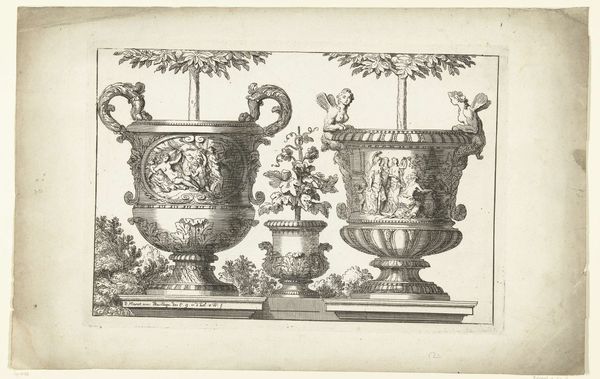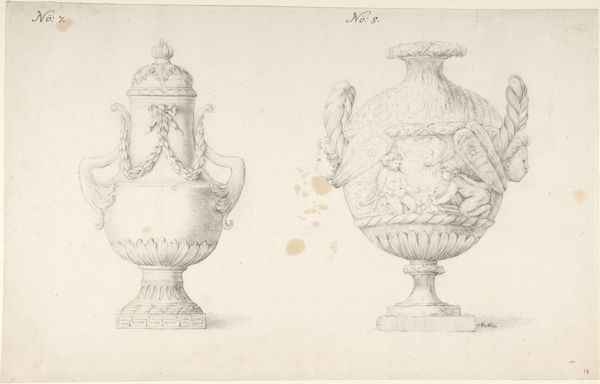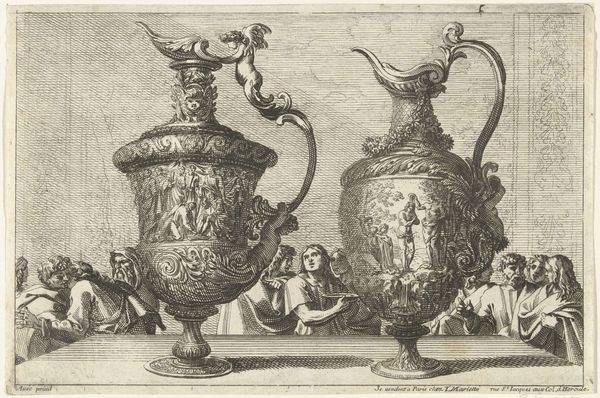
print, etching, engraving
#
baroque
# print
#
etching
#
form
#
line
#
decorative-art
#
engraving
Dimensions: height 109 mm, width 155 mm
Copyright: Rijks Museum: Open Domain
Curator: This is "Twaalf vazen," or "Twelve Vases," an etching and engraving by Mauro Antonio Tesi, created between 1740 and 1766. It’s part of the Rijksmuseum's collection. What strikes you first? Editor: The incredible detail, considering the medium. The linear quality creates almost an austere, classical mood, despite the baroque forms. I'm drawn to the intricate ornamentation on each vase; it's like a catalog of possible forms. Curator: And that's precisely part of its function. Prints like these were crucial in disseminating design ideas in the 18th century. Consider the social context: such engravings served as accessible models, propagating aristocratic taste among a growing middle class, stimulating production in workshops. The relatively simple medium also lowers production cost. Editor: From a formal perspective, the composition itself is fascinating. The repetition of forms creates a rhythm, but each vase has its unique character, defined by subtle variations in shape, decoration and line. The vases are meticulously rendered, with gradations that mimic three-dimensionality despite it being a strictly two-dimensional work. Curator: Yes, these designs are not simply aesthetic exercises. The vases themselves were products of labor, reflecting specific social relations of production. Etching and engraving allowed for broader circulation of these aspirational objects and consumption patterns, democratizing a specific cultural value, so to speak. Editor: I'd add that Tesi displays an awareness of the visual dialogue within the work. See how some vases present a heavier presence at the base while others strive upward with attenuated curves. It’s all meticulously planned; I'm compelled by the tension between surface decoration and underlying geometric structure. Curator: And it reminds us that even representations carry social meaning, mediating material culture and the systems of power that produce them. An etching enables a broader production line. Editor: Thinking about the lasting impression... beyond the social or material implications, for me, it boils down to Tesi’s mastery of line and form. The artist turns what is essentially a practical document into a visually captivating work. Curator: Indeed, this work offers layers of insights, highlighting the complex intersection of aesthetics, labor, and the dynamics of artistic dissemination in its time. Thank you.
Comments
No comments
Be the first to comment and join the conversation on the ultimate creative platform.


